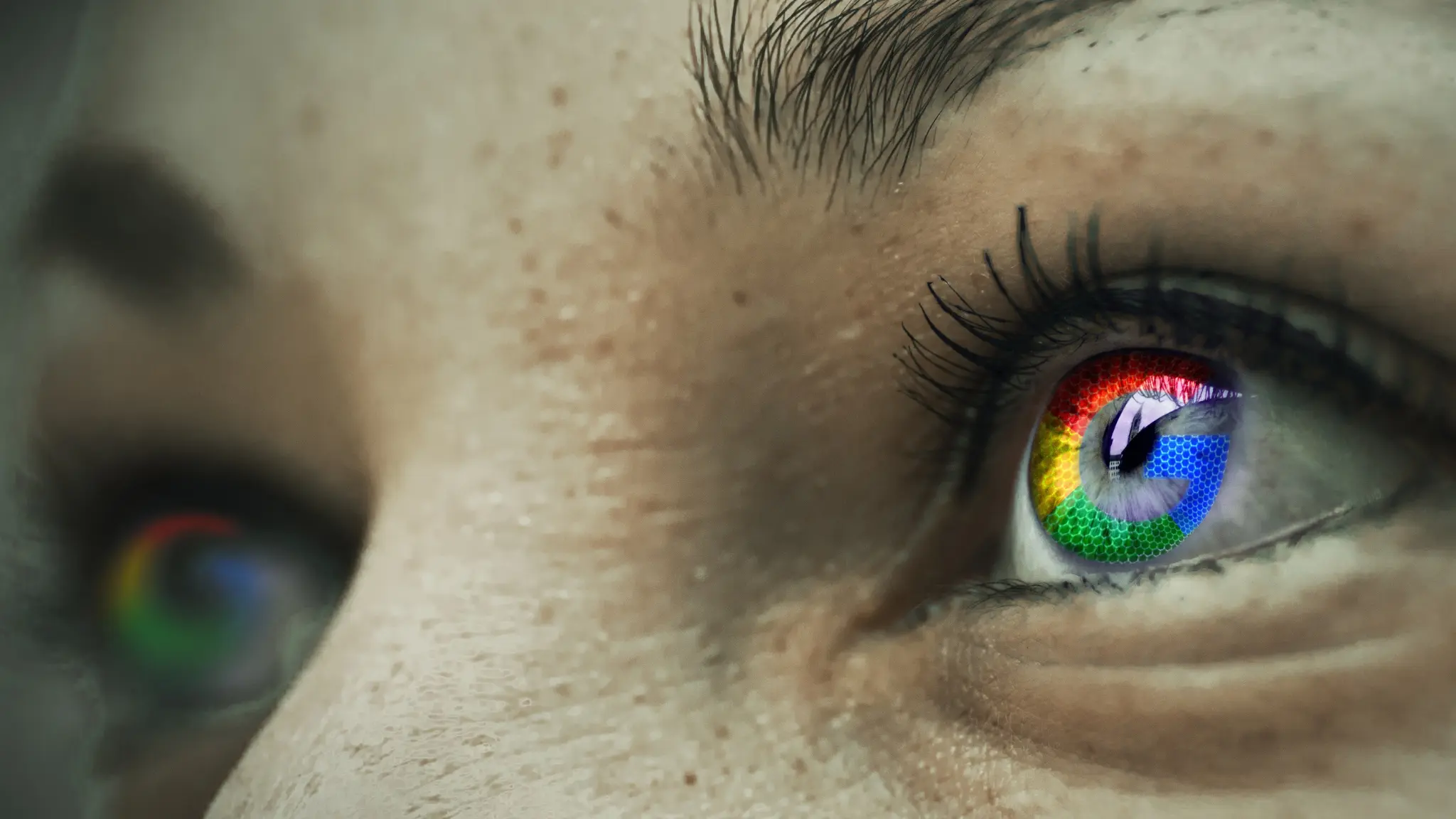As digital marketing continues to evolve rapidly, professionals in the SEO space are now facing a growing list of acronyms — not just SEO, but also AIO, GEO, and AEO. These aren’t just buzzwords — they define how search engines, AI tools, and users interact with your content.
If you’re serious about staying ahead in search visibility and performance, you need to understand these four pillars and how they differ.

🔍 1. What Is SEO (Search Engine Optimization)?
SEO is the most traditional and well-understood practice among the four. It refers to optimizing content for visibility on search engines like Google, Bing, and YouTube. Whether you’re targeting search rankings for blog posts, product pages, or YouTube videos, your intent is the same — to appear on top when someone searches with a relevant keyword.
Core Activities in SEO:
- Keyword Research & Stuffing: Targeting high-volume keywords strategically in your content.
- Backlink Building: Getting links from authoritative sites to boost credibility.
- On-Page Optimization: Using keywords in titles, descriptions, headings, and body content.
- Technical SEO: Ensuring fast site speed, mobile friendliness, proper indexing, schema markup, and crawlability.
✅ SEO remains fundamental for websites aiming to gain traffic from traditional SERPs (Search Engine Results Pages).
🤖 2. What Is AIO (AI Optimization)?
AIO stands for AI Optimization — a relatively new concept that focuses on making your brand and content visible to large language models (LLMs) like ChatGPT, Perplexity, and Claude.
While SEO is about search engines, AIO is about machine-readable visibility in AI systems that don’t function like traditional engines.
Key Aspects of AIO:
- Data Accuracy & Consistency: AI systems rely on factual data. Your information must be accurate across all sources.
- Presence on Trusted Sources: Platforms like Wikipedia, Quora, and other LLM-fed databases increase your brand’s chances of being referenced.
- Machine-Friendly Formats: Use structured data, schema markup, and semantic tags to help AI tools “read” your content easily.
- Brand Mentions in Public Datasets: LLMs are trained on massive public content—ensuring your brand is included increases visibility.
Why AIO Matters: As AI models become more prominent in search-like behavior, optimizing your brand for inclusion in their responses becomes crucial. You’re not ranking anymore; you’re becoming a referenced authority.
⚙️ 3. What Is GEO (Generative Engine Optimization)?
GEO or Generative Engine Optimization is the practice of optimizing content for AI-powered search engines, especially those delivering results through generative responses.
These include:
- Google SGE (Search Generative Experience)
- Bing Chat
- Perplexity.ai
- You.com
GEO Focus Areas:
- E-E-A-T Compliance: Your content must demonstrate Experience, Expertise, Authoritativeness, and Trust.
- Clarity and Context: Answers need to be clear, intent-matching, and written in a humanized tone.
- Schema + Structured Data: Markup helps generative engines understand and represent your data.
- Website Authority: Without strong domain authority and credibility, your site won’t be pulled into generative answers.
The Goal: To have your website and brand cited within AI-generated answers, not just ranked.
📝 Note: GEO and AIO often overlap, but GEO focuses more on visibility in AI-driven search interfaces, while AIO is about presence within AI models’ knowledge graphs.
🧠 4. What Is AEO (Answer Engine Optimization)?
AEO or Answer Engine Optimization focuses on optimizing your content to be served as direct answers to user queries. Think:
- Featured snippets
- Google Assistant voice answers
- Alexa voice replies
- Smart answer boxes
How to Optimize for AEO:
- Give Direct Answers: The first sentence of your content should directly answer the query.
- Use Conversational Language: Natural tone, short sentences, and clear explanations work best.
- Structure Answers Clearly: Use bullets, lists, FAQs, and definitions.
- Use Schema Markup: Especially FAQ, How-To, and Definition types.
Purpose: To appear in voice results or direct answer boxes — even before standard search listings.
🧭 How These Four Optimization Strategies Work Together
| Technique | Focus | Platforms | Goal |
|---|---|---|---|
| SEO | Ranking on search engines | Google, Bing, YouTube | Traffic from SERPs |
| AIO | Visibility to AI models | ChatGPT, Claude, Perplexity | AI-referenced answers |
| GEO | Presence in AI search engines | Google SGE, Bing Chat | Answer inclusion |
| AEO | Direct question-answer content | Voice Assistants, Snippets | Quick answer access |
🔄 Why Should Marketers Care?
We are entering a multi-modal, AI-first world where:
- People no longer rely only on Google for search.
- Users ask questions via voice, AI chat, or multi-search.
- AI tools summarize and skip linking if your content is not optimized.
You must now optimize for:
✅ Search Engines
✅ AI Engines
✅ Voice Assistants
✅ Language Models
The brands that do this early will be the ones leading in the next era of content visibility.
🔧 Tools to Help You Implement These
- Google Search Console – for traditional SEO
- Schema.org – to generate structured data
- Exploding Topics – to identify future-facing content ideas
- Perplexity.ai – to see how your brand appears in generative AI results
- ChatGPT – to simulate and test AI-based queries
- Surfer SEO – for content optimization across all formats
🧠 Final Thoughts: The New Era of Optimization
The game has changed.
It’s no longer about keyword density or backlinks alone.
Now it’s about being credible, referenced, accessible, and answerable.
SEO still matters — but it’s only one part of a larger, smarter optimization strategy.
If you’re a business owner, marketer, or content strategist — now is the time to adapt. Those who embrace AIO, GEO, and AEO alongside traditional SEO will have a clear edge.
Written by Qausain Anwar
Founder, BranxHQ
Helping modern brands stay visible in an AI-first digital world.







